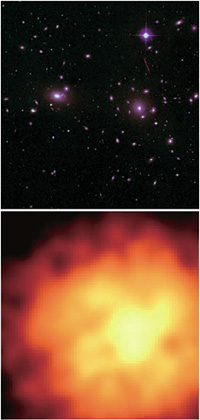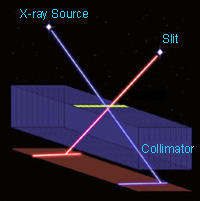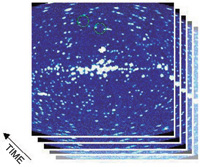This is an archive of information released in the past.
Disclaimer: It may contain broken links or outdated information. Some parts may not function in current web browsers.
*Visit https://humans-in-space.jaxa.jp/en/ for the latest information.

Experiment
- News
- Kibo Utilization Strategy
- Kibo Utilization Plan
- List of JAXA's Utilization Themes
- Experiment Facilities
- Space Environment Utilization
- Archive
News
- MAXI detects a “fireball,” succeeds in observing a nova explosion. (January 15, 2014)
- MAXI detects a hypernova remnant - the world's first discovery in the Milky Way Galaxy (April 19, 2013)
- Scientific paper in Nature using the Monitor of All-sky X-ray Image (MAXI) on Kibo and the Swift satellite (USA) observations (August 25, 2011)
- MAXI Discovers New X-ray Nova in Centaurs (October 22, 2010)
- Discovery of an X-ray Nova by the Monitor of All-sky X-ray Image (MAXI) (September 29, 2010)
- MAXI acquires all-sky X-ray image in the fastest time (November 26, 2009)
- MAXI successfully captured First Light images (August 18, 2009)
- Initial function checkouts of MAXI and SEDA-AP began (August 5, 2009)
Background

Figure 1. The Coma Cluster of Galaxies: images taken by visible light (top) and X-ray (bottom)

Figure 2. Field of View of MAXI
An X-ray is an electromagnetic wave just like visible light, but it has a much shorter wavelength, and is known to be generated from super-hot gas or high-energy particles. Observations of the sky with X-ray band often reveal brightly shining X-ray objects even from dark and invisible sky region with visible band (Figure 1). That means there are a number of X-ray objects that are extremely energetic in this universe. Most of these X-ray objects are thought to be related to strange objects such as neutron stars and black holes, which are exploding matter or ejecting jets so that they can generate X-rays.
Extensive X-ray observations of the universe by many astronomers have revealed that X-ray objects are widespread across the universe, and that they change their X-ray intensity over time. However, the whole picture of the events remains unknown. Only a small number of unpredictable star explosions such as X-ray novae, and rapid time variations of stars have been observed with X-ray band, so more observational data for such events is needed. Especially, more unpredictable variable objects from deeper universe are expected.
The energy of an X-ray is thousands times as strong as that of visible light, so it can be viewed inside the human body in an X-ray beam, but X-rays cannot penetrate deeply the Earth’s atmosphere due to interaction between X-rays and air. Therefore, observations of X-rays from deep universe needs to be conducted in space out of the atmosphere. It also has to cover the entire sky continuously so that it can capture unpredictable rapid variability in stars. For this purpose, the world’s largest wide-field X-ray camera was designed to be installed on the Japanese Experiment Module (Kibo) in the International Space Station (ISS) and to monitor X-ray objects in the entire sky. That is the Monitor of All-sky X-ray Image (MAXI).
Purpose and Overview of the Observation
The previous astronomical satellites covering X-ray sources in the entire sky have mainly focused on active X-ray sources in our galaxy. By contrast, the MAXI will monitor dynamic events in the active objects far away from our galaxy, using cameras which are 20 times as sensitive as those for previous satellites with X-ray cameras of wide field of views. It will also make a map of the entire sky of active galaxies, so that the large-scale structure of the universe can be created by X-rays. This would be different from the one by visible light.
The MAXI will monitor X-ray intensity from more than 1,000 X-ray sources covering the entire sky on time intervals ranging from a day to a few months (Figure 2). It will be the first time objects inside and out of our galaxy will be monitored by X-rays with such short intervals (Figure 3).
Discoveries of X-ray novae, X-ray transients and gamma-ray bursts by the MAXI will be distributed worldwide through the Internet, so that astronomical observatories all over the world will be able to start observing those astronomical events immediately. As a result, astronomers around the world who receive information from the MAXI will achieve detailed observations of the early-stage evolution of those events, which was difficult with conventional observation systems. This will lead to further understanding of astronomical transient phenomena.
What makes the MAXI attractive is that it can monitor the entire sky with a high degree of sensitivity to capture variability of the active universe, and send the results of its observation in nearly real time worldwide.
Instruments

Figure 4. Gas Proportional Counters

Figure 5. X-ray Cooled CCD

Figure 6. One-dimensional Position Sensitive X-ray Proportional Counter
The MAXI is equipped with two types of cameras as detectors: a gas slit camera with proportional counters (Figure 4), and an X-ray CCD slit camera with an X-ray CCD (Figure 5).
Since X-ray radiation from a celestial object reaches the detector through a narrow opening of a slit, the position where the radiation is detected in the detector can locate the object (Figure 6).
The combination of two detectors allows X-ray surveys over a wide wavelength range from soft to hard X-rays, with a better-energy resolution, enabling a sort of X-ray color photography.
Organization
 |
Principal Investigator (PI)
Masaru MATSUOKA Senior Researcher, Institute of Space and Astronautical Science, JAXA |
| Copyright 2007 Japan Aerospace Exploration Agency | Site Policy |
